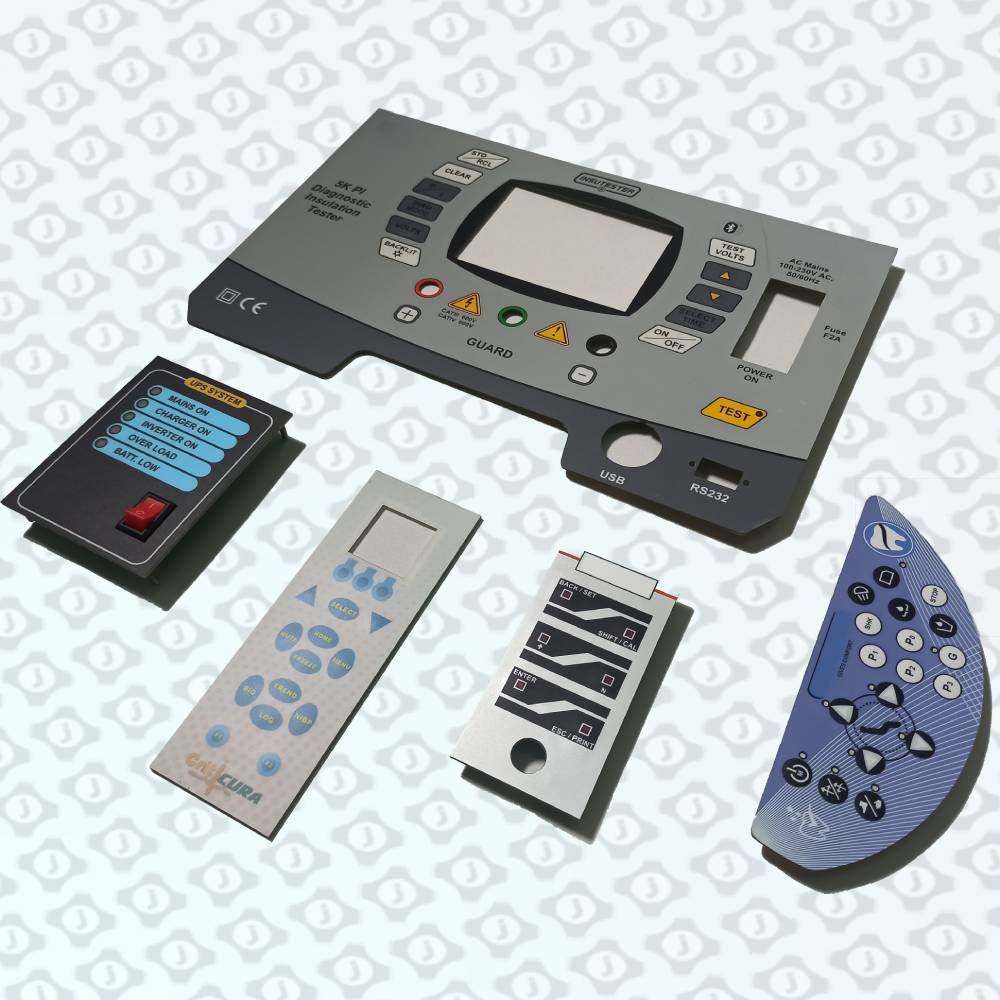Membrane keyboards consist of keys that have pressure pads with symbols printed on them. This is completely opposite to a mechanical keyboard, which features separate individual keys. Because of their design, membrane keyboards are thinner, smaller and more compact than their mechanical counterparts.
Custom Membrane Keypads (Keyboards) and Switches

Custom Membrane Keypads (Keyboards) and Switches
A membrane keypad is a momentary closure device used with a normally open circuit. They are called membrane switches because they are made up of flexible graphics and internal layers (or membranes) over a printed circuit. Membrane keyboard / keypads can range from flexible keyboard, backlit keyboard, waterproof keyboard, embossed keyboard, hybrid keyboard, front facia keyboard, tactile and non – tactile keyboard and many more.
The applications for our membrane keypads range from medical technology to the automotive industry to the waste disposal and recycling industry. Whether high demands are made of hygiene, or the systems are exposed to extreme external influences, as manufacturers of membrane keypads we supply the right HMI for every sector. Size, design and colour can be designed individually by you for all our membrane keypads.
Edit your site visually or through a simplified interface. The choice is yours.
Both technically and with regard to design
Wide range of design options with one or more colours.
Reliable protection against dirt and water.
thanks to functional keys and additional individual features.
Suitable for integration in electronics enclosures and your own operating units
Our products are of high-quality materials and with excellent workmanship.
Keyboards that have keys that are incorporated into one platform with no separate moving components.
Applied Applications
FAQs about Graphic Overlays
What are membrane keypads and keyboards?
Membrane keyboards also known as membrane switches are pressure-sensitive pads that are outlined as well as symbols that are printed onto a surface. They work through an electrical connection between the keyboard’s surface and the circuits underneath when the tops of the keys are pressed by external force. The fundamental idea for the operation of a membrane-based keypad is that the connection behind the tactile or non-tactile keyboard shuts off an open loop in the circuit, which is then closed by its flexible tail. Keypads with membranes vary from a flexible keyboard to a water-proof keyboard with backlighting embossed keyboards, hybrid keyboards and front facia keyboards, non-tactile as well as tactile keyboards and additional.
What is the minimum required delivery?
We supply starting from a batch size of 50 units
Where will the switch be used?
Membrane keyboards are a type of keyboard that uses a flexible membrane under the keys to register a key press. They are widely used in various fields such as consumer electronics, industrial, commercial, scientific, and military equipment. Membrane keyboards are known for their low cost, durability, and easy maintenance, making them a popular choice for use in many different applications.
Under what environment membrane keyboard switches are used?
Membrane keyboards are generally well-suited for use in environments where there is a need for a low-cost, durable, and easy-to-maintain keyboard. They are resistant to dust, dirt, and liquids, making them suitable for use in outdoor or industrial settings. They are also relatively quiet, which makes them a good choice for use in environments where noise levels need to be kept to a minimum.